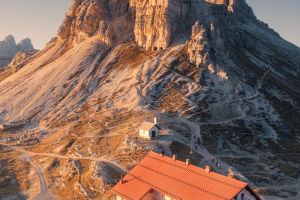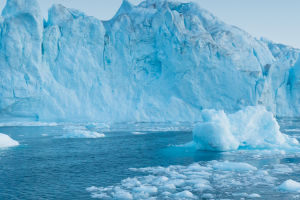Lakes
The total area of lakes on Earth is 2.7 million square kilometers, accounting for 1.8 percent of the land area, and there are 35 lakes larger than 5,000 square kilometers. Finland has the largest number of lakes and is known as the "Land of 10,000 Lakes", with more than 60,000 lakes of all sizes.
The world's largest saltwater lake is the Caspian Sea, with an area of 371,000 square kilometers and a storage capacity of 89.6 trillion cubic meters. The Caspian Sea is located between the continents of Europe and Asia. It is bordered by the Caucasus Mountains to the southwest and the Erskine Mountains to the south.
The Caspian Sea used to be part of the ocean.
About a few million years ago, the Caspian Sea was connected to the Mediterranean Sea. Through crustal movements, the extent of the sea and land here has changed several times and finally separated into an inland lake. In geography, this type of lake is called a sea track lake.
The largest freshwater lake is Lake Superior on the U.S.-Canada border, with an area of 82,100 square kilometers and a storage capacity of 116,000 cubic meters.
The largest group of freshwater lakes in the Great Lakes of North America, with a total area of 245,000 square kilometers and a total water storage capacity of 22.8 trillion cubic meters.
The highest geographic location of the lake for the Tibet Autonomous Region of China's Namucuo is the lake surface of 4718 meters above sea level.
The lowest lake for the Dead Sea, the lake's surface elevation in the sea level 395 meters below.
Once formed, the lake is subject to external natural factors and internal processes continue to evolve. A large amount of sediment and biological debris carried by the incoming rivers is deposited in the lake year after year, and the lake basin gradually silts up and becomes land.
Or, with the development of aquatic plants along the coastal zone, it gradually becomes a marsh. Inland lakes in dry climatic conditions are subject to climate variability, reduced snow and ice melt water, declining groundwater levels, etc.
The amount of recharge water is not enough to compensate for evaporation losses, often causing the lake to recede and dry up. Salts accumulate and concentrate in the lake basin, and the lake water becomes increasingly saline and eventually becomes a dry salt lake.
Some lakes dry up due to the undercutting of the outlet and the outflow of lake water. In addition, due to the movement of the earth's crust, climate change, and other factors that form lakes, lakes will go through a process of shrinking and expanding repeatedly, and no matter which way the natural evolution of the lake goes, the result will eventually disappear.
Lakes are an important part of global water resources. The total area of lakes on earth is about 2058700 square kilometers, with a total water volume of about 176400 cubic kilometers. Of this, freshwater reserves account for about 52% or about 0.26% of the world's freshwater reserves.
Lakes are an important part of waterway traffic. The lakes are rich in fish, shrimp, crab, and shellfish, and are an important source of raw materials for aquaculture and the light industry. Lakes are receiving increasing attention as tourism resources.
The unreasonable development of lake resources will cause the decay of lake fishery resources, the reduction of the lake area and the swampiness of the land around the lake, and other undesirable consequences.
Lakes are important resources with various functions such as regulating river runoff, developing irrigation, providing water for industry and drinking, reproducing aquatic organisms, communicating with shipping, improving the regional ecological environment, and developing minerals. At the same time, lakes and their watersheds are important places for human survival.
Lakes themselves are sensitive to global changes, and in this complex and huge system of man and nature, lakes are the nexus of the interaction between the various circles of the earth's surface system.
They are an important part of the terrestrial hydrosphere, closely related to the biosphere, atmosphere, and lithosphere, and have the special functions of regulating regional climate, recording regional environmental changes, maintaining regional ecosystem balance, and reproducing biodiversity.


